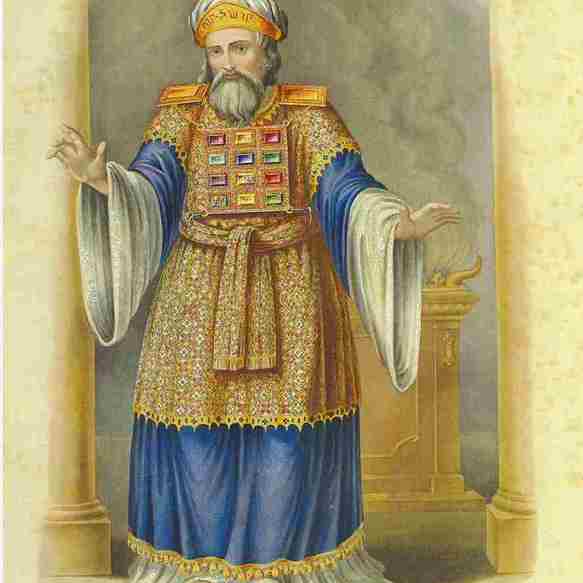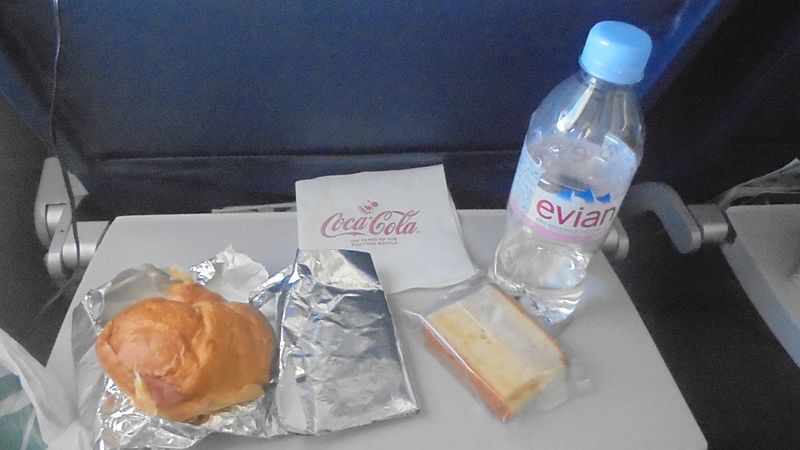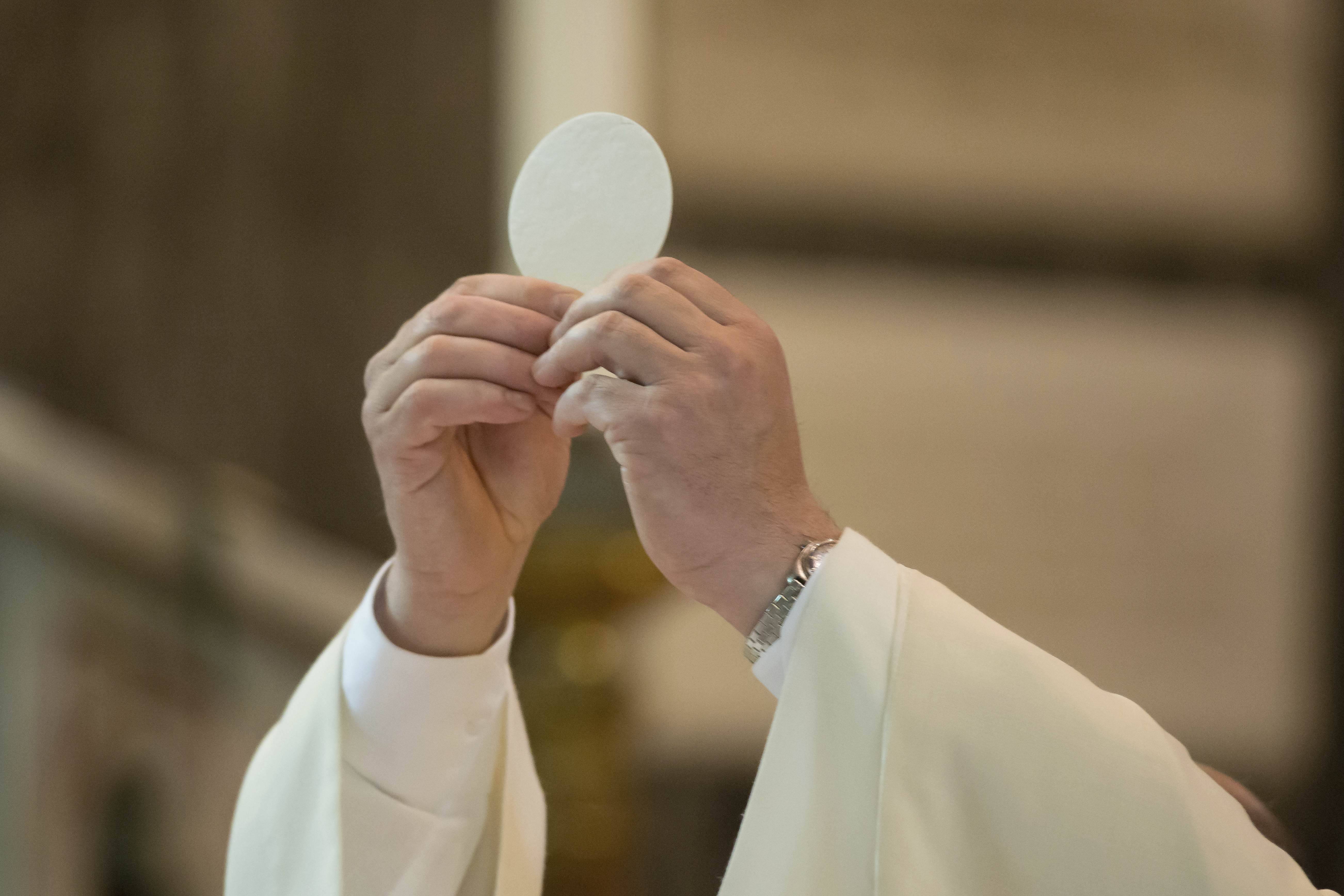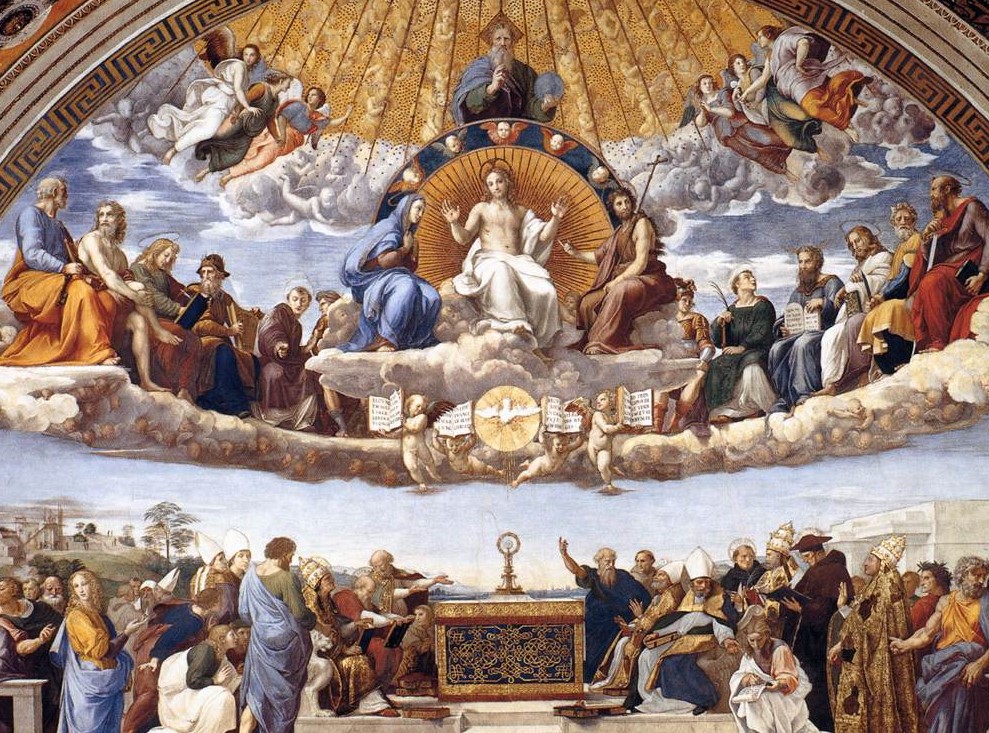N.B. There is a video version of this homily below
In today’s Gospel we encounter two discouraged and broken men making their way to Emmaus. The text describes them as “downcast.” That is to say, their eyes are cast on the ground, their heads are hung low. Their Lord and Messiah has been killed, the one they had thought would finally liberate Israel. Some women had claimed that He was alive, but these disciples have discredited those reports and are now leaving Jerusalem. It is late in the afternoon and the sun is sinking low.
They are also moving in the wrong direction, West, away from Jerusalem, away form the resurrection. They have their backs to the Lord, rising in the East.
The men cannot see or understand God’s plan. They cannot “see” that He must be alive, just as they were told. They are quite blind as to the glorious things that happened hours before. In this, they are much like us, who also struggle to see and understand that we have already won the victory. Too easily our eyes are cast downward in depression rather than upward in faith.
How will the Lord give them vision? How will He reorient them, turn them in the right direction? How will He enable them to see His risen glory? How will He encourage them to look up from their downward focus and behold new life?
If you are prepared to “see” it, the Lord will celebrate Holy Mass with them. In the context of a sacred meal we call the Mass, He will open their eyes and they will recognize Him; they will see glory and new life.
Note that the entire gospel, not just the last part, is in the form of a Mass. There is a gathering, a penitential rite, a Liturgy of the Word, intercessory prayers, a Liturgy of the Eucharist, and an ite missa est. In this manner of a whole Mass, they have their eyes opened to Him and to glory. They will fulfill the psalm that says, Taste, and see, the goodness of the Lord (Psalm 34:8).
Let’s examine this Mass, which opens their eyes, and ponder how we also taste and see in every Mass.
Stage One: Gathering Rite – The curtain rises on this Mass with two disciples having gathered together on a journey: Now that very day two of them were going to a village seven miles from Jerusalem called Emmaus (Lk 24:13). We have already discussed above that they are in the midst of a serious struggle and are downcast. We only know one of them by name, Cleopas. Who is the other? If you are prepared to accept it, the other is you. So, they have gathered. This is what we do as the preliminary act of every Mass. We who are pilgrims on a journey come together on our journey.
It so happens for these two disciples that Jesus joins them: And it happened that while they were conversing and debating, Jesus himself drew near and walked with them (Luke 24:15). The text goes on to tell us that they did not recognize Jesus yet.
The Lord walks with us, too. It is essential to acknowledge by faith that when we gather together at Mass the Lord Jesus is with us. Scripture says, For where two or three are gathered in my name, there am I among them (Matt 18:20). For many of us, too, although Jesus is present we do not recognize Him. Yet he is no less among us than He was present to these two disciples who fail to recognize Him.
Liturgically, we acknowledge the presence of the Lord at the beginning of the Mass in two ways. First, as the priest processes down the aisle the congregation sings a hymn of praise. It is not “Fr. Jones” they praise; it is Jesus, whom “Fr. Jones” represents. Once at the chair the celebrant (who is really Christ) says, “The Lord be with you.” In so doing He announces the presence of Christ among us promised by the Scriptures.
The Mass has now begun and our two disciples are gathered; the Lord is with them. So, too, for us at every Mass. The two disciples still struggle to see the Lord, to experience new life, and to realize that the victory has already been won. So, too, do some of us who gather for Mass. The fact that these disciples are gathered is already the beginning of the solution. Mass has begun. Help is on the way!
Stage Two: Penitential Rite – The two disciples seem troubled and the Lord inquires of them the source of their distress: What are you discussing as you walk along? (Lk 24:17). In effect, the Lord invites them to speak with Him about what is troubling them. It may also be a gentle rebuke from the Lord that the two of them are walking away from Jerusalem, away from the site of the resurrection.
Clearly their sorrow and distress are governing their behavior. Even though they have already heard evidence of Jesus’ resurrection (cf 24:22-24), they seem hopeless and have turned away from this good news.
Thus the Lord engages them in a kind of gentle penitential rite, engages them about their negativity.
So, too, for us at Mass. The penitential rite is a moment when the celebrant (who is really Christ) invites us to lay down our burdens and sins before the Lord, who alone can heal us. We, too, often enter the presence of God looking downcast and carrying many burdens and sins. Like these disciples, we may be walking in the wrong direction. In effect, the Lord says to us, “What are thinking about and doing as you walk along? Where are you going with your life?”
The Lord asks them to articulate their struggles. This calling to mind of struggles, for them that day and for us in the penitential rite, is a first step to healing and recovery of sight.
Again, we see in this story about the two disciples on the road to Emmaus, the Mass that is so familiar to us.
Stage Three: Liturgy of the Word – In response to their concerns and struggles, the Lord breaks open the Word of God, the Scriptures: Then beginning with Moses and all the prophets, he interpreted to them what referred to him in all the scriptures (Luke 24:27).
Not only does the Lord refer to Scripture, He interprets it for them. Hence the Word is not merely read; there is a homily, an explanation and application of the Scripture to the men’s struggles. The homily must have been a good one, too, for the disciples later remark, Were not our hearts burning (within us) while he spoke to us on the way and opened the scriptures to us? (Luke 24:32)
So, too, for us at Mass. Whatever struggles we may have brought, the Lord bids us to listen to His Word as the Scriptures are proclaimed. Then the homilist (who is really Christ) interprets and applies the Word to our life. Although the Lord works through a weak human agent (the priest or deacon), He can write straight with crooked lines. As long as the homilist is orthodox, it is Christ who speaks. Pray for your homilist to be an obedient and useful instrument for Christ at the homily moment.
Notice, too, that although the disciples do not yet fully see, their downcast attitude is gone; their hearts are now on fire. Pray God, that it will be so for us who come to Mass each week and hear from God that the victory is already ours in Christ Jesus. God reminds us, through Scripture passages that repeat every three years, that although the cross is part of our life, the resurrection surely is, too. We are carrying our crosses to an eternal Easter victory. If we are faithful to listening to God’s Word, hope and joy build within our hearts and we come, through being transformed by Christ in the Liturgy, to be men and women of hope and confidence.
Stage Four: Intercessory Prayers – After the homily, we usually make prayers and requests of Christ. We do this based on the hope, provided by His Word, that He lives, loves us, and is able. So it is that we also see these two disciples request of Christ, Stay with us, for it is nearly evening and the day is almost over (Luke 24:29).
Is this not what we are doing when we say, in so many words, “Stay with us, Lord, for it is sometimes dark in our lives and the shadows are growing long. Stay with us, Lord, and with those we love, so that we will not be alone in the dark. In our darkest hours, be to us a light, O Lord, a light that never fades away”?
Indeed, it is already getting brighter, for we are already more than halfway through the Mass!
Stage Five: Liturgy of the Eucharist – Christ does stay with them. Then come the lines that no Catholic could miss: And it happened that, while he was with them at table, he took bread, said the blessing, broke it, and gave it to them (Luke 24:30). Yes, it is the Mass to be sure. All the basic actions of the Eucharist are there: He took, blessed, broke, and gave. They are the same actions that took place at the Last Supper and that we repeat at every Mass. Later, the two disciples refer back to this moment as the breaking of the bread (Luke 24:35), a clear biblical reference to the Holy Eucharist.
The words of Mass immediately come to mind: “While they were at supper, He took the bread and gave you thanks and praise. He broke the bread, gave it to His disciples, and said, “Take this all of you and eat it. This is my Body, which will be given up for you.”
A fascinating thing then occurs: With that their eyes were opened and they recognized him, but he vanished from their sight (Luke 24:31).
It is the very act of consecration that opens their eyes. Is this not what Holy Communion is to do for us? Are we not to learn to recognize Christ by the very mysteries we celebrate? Are we not to “taste and see”?
The liturgy and the sacraments are not mere rituals; they are encounters with Jesus Christ. Through our repeated celebration of the holy mysteries, our eyes are increasingly opened, if we are faithful. We learn to see and hear Christ in the liturgy, to experience his ministry to us.
The fact that Jesus vanishes from their sight teaches us that He is no longer seen with the eyes of the flesh, but with the eyes of faith and the eyes of the heart. Although He is gone from our earthly, fleshly, carnal sight, He is now to be seen in the sacrament of the altar and experienced in the Liturgy and in other sacraments. The Mass has reached its pinnacle for these two disciples and for us. They have tasted and now they see.
Consider these two men who began this Gospel quite downcast. Their hearts are on fire and they now see. The Lord has celebrated Mass in order to get them to this point. So, too, for us: the Lord celebrates Mass in order to set our hearts on fire and open our eyes to glory. We need to taste in order to see.
I sought the Lord, and he answered me; he delivered me from all my fears. Those who look to him are radiant; their faces are never covered with shame. This poor man called, and the Lord heard him; he saved him out of all his troubles. … Taste and see that the Lord is good; blessed is the man who takes refuge in him (Psalm 34:4-8).
Yes, blessed are we if we faithfully taste in order to see, every Sunday at Mass.
Stage Six: Ite Missa Est – Not able to contain their joy or hide their experience, the two disciples run seven miles back to Jerusalem to tell their brethren what has happened and how they encountered Jesus in the breaking of the bread. They want to, they must speak of the Christ they have encountered, what He said and what He did.
Note that this liturgy has reoriented them. They are now heading back east, toward the Risen Son.
How about us? At the end of every Mass, the priest or deacon says, “The Mass is ended. Go in peace.” This does not mean, “We’re done, go home and have nice day.” It means, “Go into the world and bring the Christ you have received to others. Tell them what you have seen and heard here, what you have experienced. Share with others the joy and hope that this Liturgy gives.”
Have you ever noticed that part of the word “mission” is in the word “dismissal”? You are being commissioned, sent on a mission to announce Christ to others.
Finally, the Lucan text says of these two disciples, So they set out at once and returned to Jerusalem where they found gathered together the eleven and those with them … Then the two recounted what had taken place on the way and how he was made known to them in the breaking of the bread (Lk 24:33,35). How about us? Does our Mass finish that well, that enthusiastically? Can you tell others that you have come to Christ in “the breaking of the bread,” in the Mass?
Jesus has used the Mass to drawn them from gloom to glory, from downcast to delighted, from darkness to light. It was the Mass. Do you “see” it there? It is the Mass. What else could it be?
Here is a video version of this homily








